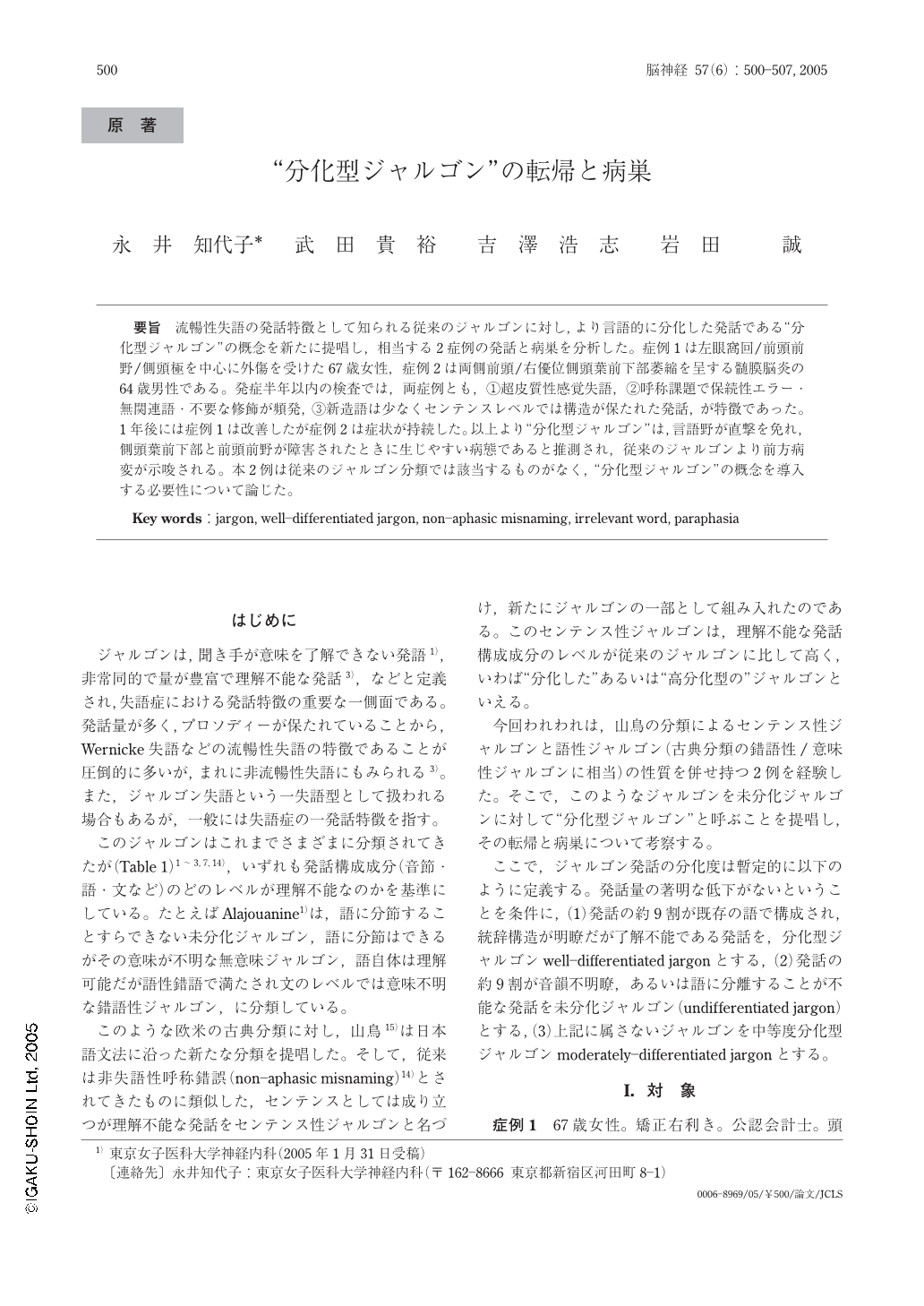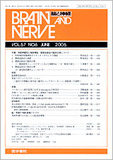Japanese
English
- 有料閲覧
- Abstract 文献概要
- 1ページ目 Look Inside
要旨 流暢性失語の発話特徴として知られる従来のジャルゴンに対し,より言語的に分化した発話である“分化型ジャルゴン”の概念を新たに提唱し,相当する2症例の発話と病巣を分析した。症例1は左眼窩回/前頭前野/側頭極を中心に外傷を受けた67歳女性,症例2は両側前頭/右優位側頭葉前下部萎縮を呈する髄膜脳炎の64歳男性である。発症半年以内の検査では,両症例とも,①超皮質性感覚失語,②呼称課題で保続性エラー・無関連語・不要な修飾が頻発,③新造語は少なくセンテンスレベルでは構造が保たれた発話,が特徴であった。1年後には症例1は改善したが症例2は症状が持続した。以上より“分化型ジャルゴン”は,言語野が直撃を免れ,側頭葉前下部と前頭前野が障害されたときに生じやすい病態であると推測され,従来のジャルゴンより前方病変が示唆される。本2例は従来のジャルゴン分類では該当するものがなく,“分化型ジャルゴン”の概念を導入する必要性について論じた。
Abstract
We introduce “well-differentiated jargon” as a new type of jargon with two relevant cases. To give a simple and clear framework to a classification of jargon, we define three types of jargon as follows : Under the condition that utterance does not decrease remarkably, (1)If approximately 90% of whole utterance consists of real words and clear syntactic structure though incomprehensible, it is “well-differentiated jargon”. (2)If approximately 90% of whole utterance consists of unclear phonemes or phonemes that are not able to divide into words, it is “undifferentiated jargon”. (3)If in-comprehensible utterance does not belong to any type of jargon above, it is “moderately-differentiated jargon”. In this line of definition, “well-differentiated jargon” is the most highly differentiated jargon. The following cases are the examples of “well-differentiated jargon” : Case 1 was a 67-year-old woman with head injury of the left orbital cortex, prefrontal cortex, and temporal pole ; Case 2 was a 64-year-old man with brain atrophy in bilateral frontal cortex and bilateral (right dominant) anteroinferior temporal cortex after meningoencephalitis. Within six months after onset, they showed characteristic verbal aspects as follows ; transcortical sensory aphasia ; utterance with a lot of perseverative error, irrelevant words, unnecessary qualifiers during the naming task ; well-preserved syntactic structure in a sentence with a few neologism. One year after the first verbal assessment, the performance of Case 1 improved almost entirely, whereas characteristic utterance was still observed in Case 2. These results suggest that “well-differentiated jargon” can be caused by lesions in anteroinferior temporal cortex and prefrontal cortex with preserved language area, where involve more anterior region than that of classical jargon. These two cases cannot belong to any classical jargon, and then we insist the adoption of new type of jargon,“well-differentiated jargon”.
(Received : January 31, 2005)

Copyright © 2005, Igaku-Shoin Ltd. All rights reserved.


